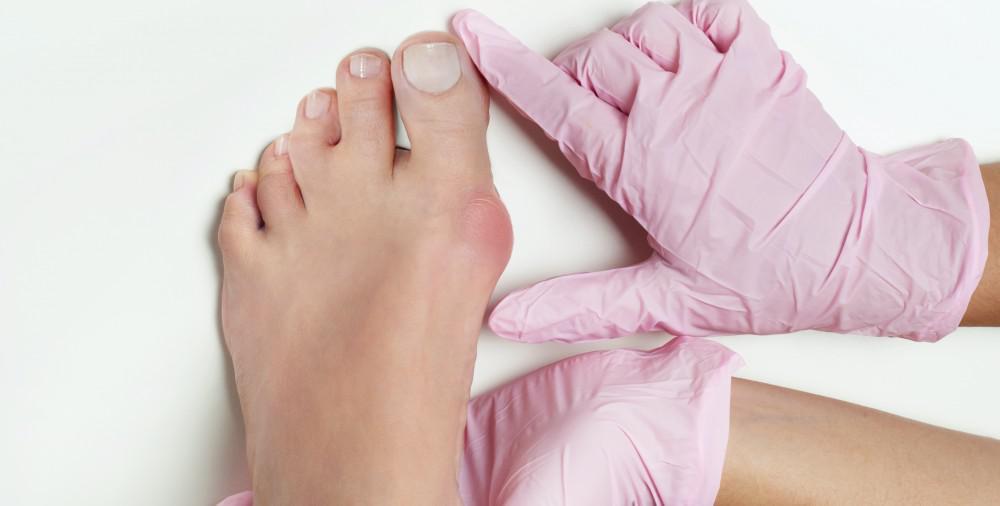Preventing Bunion Progression

When most people hear the word “bunion” they may think about their grandmother’s feet stressed from years of improper shoes. However, to much surprise, bunions are not just a condition that affects older individuals. In fact, it is suggested that approximately 3-5% of adults have some degree of deformity in their great toe with the average age of onset being in the 20s and 30s.
So, what exactly is a bunion and what can be done to prevent the onset of this condition?
Below we will review bunion basics including causes, symptoms, treatment, and prevention.
A bunion, also known as hallux valgus, is a bony bump on the inside of the foot near the great toe joint. It forms when the long bone of the foot called the 1st metatarsal shifts out of place because of midfoot instability or ligament laxity.
In addition, as the 1st metatarsal starts to shift outward, the great toe is being pulled toward the smaller toes by small muscles on the bottom of the foot. This opposing shift between the 1st metatarsal and the great toe causes a loss of joint alignment and deviation off the cartilage.
Bunion symptoms can vary greatly depending on the size of the bunion and degree of deviation off the cartilage. The mild bunion may present as tightness in shoes, irritation on the bump and pain on extreme flexion of the great toe. Whereas those with more severe bunions will start to experience bursitis over the bump, limited range of motion at the great toe, pain in the great toe due to arthritis and pushing into or even crossing over the 2nd toe.
As much as we want to blame shoes for bunion formation, this is not the most common cause of bunion formation. Foot type, arch strength and ligament laxity are the biggest contributors to bunion formation.
Over-pronation and flexible flat feet cause instability in the joints that stabilize the 1stmetatarsal bone. Walking, running, and jumping on an unstable or flexible foot can start to cause deviation of the 1st metatarsal bone.
Combine this with weak foot muscles and ligament laxity and you are on your way to a bunion forming.
Since most bunions involve a deviation of the 1st metatarsal bone it makes them structural deformities which means they cannot be reversed without surgery.
If surgical correction is not of interest, then the focus should be on managing the symptoms and slowing the progression of the bunion.
Most common conservative treatments for bunions include:
- Wider footwear
- Toe spacers such as Naboso Splay
- Paddings over the bump
- Cortisone injections into the joint
Optimal foot strength and midfoot stability are key to slowing or even pausing the progression of bunion formation.
Custom orthotics, textured insoles, foot exercises such as short foot, toe spacers and glute strengthening are all an important part of the prevention of bunion progression.
If you think you may have a bunion or want to learn ways to prevent the progression of a bunion see your local podiatrist or follow Naboso for more foot health tips.